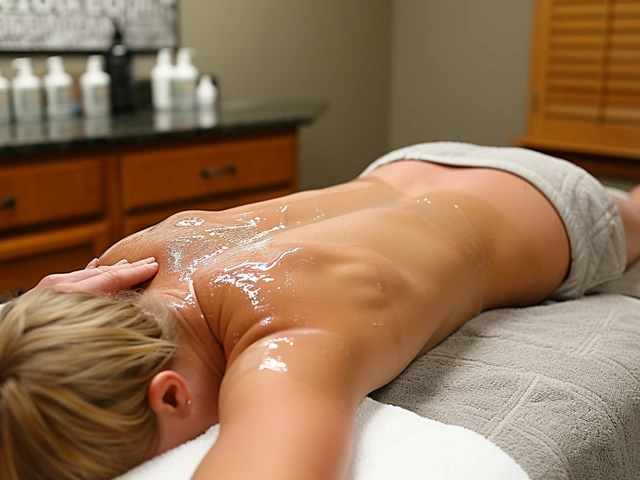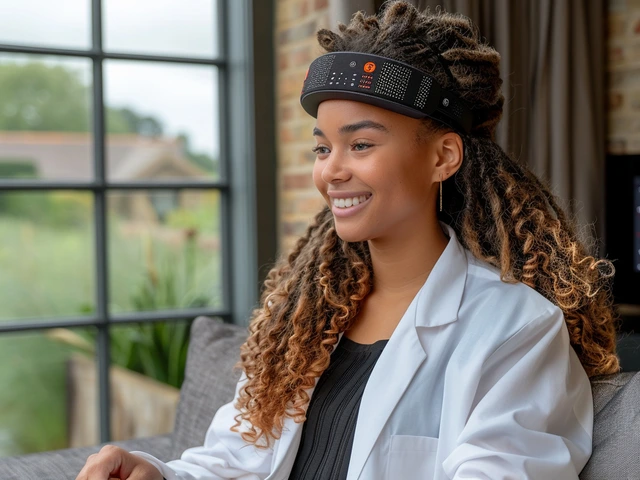Stress migraines that won’t quit, a pounding heart at midnight for no reason, sweaty palms before a work presentation—ever wish you could just tell your body to calm down? That’s what biofeedback is all about. This isn’t a futuristic movie gadget—real clinics across Australia are using biofeedback tech to help Aussies tackle headaches, anxiety, gut issues, and even chronic pain, all without a single needle or scary side effect. The idea sounds borderline superpower: watch your body’s stress on a screen and learn how to control it. But skeptics are everywhere, and let’s be honest, plenty of people aren’t even sure what biofeedback means. So, how does it work, what does it really fix, and is it just for wellness junkies or actually for anyone with a body? If you’ve ever longed for more control over how your mind and muscles respond to life, biofeedback might just become your favorite new obsession.
How Biofeedback Works: Science, Tools, and What You Actually Do
At its heart, biofeedback relies on one simple idea: your body’s automatic reactions aren’t as automatic as you think. When you’re stressed, your hands might get clammy, your heart speeds up, or your breathing goes shallow. Hook yourself up to sensors—usually nothing scarier than stickers on your skin or a snug heart rate monitor—and a computer spits out real-time data about your body’s stress. You see those numbers on a screen: your heart pounding, your skin sweating, your breathing speeding up. Then, under a therapist’s guidance, you try different techniques (breathing exercises, mental imagery, sometimes just straight up relaxing your jaw and shoulders) and watch the numbers change in real time. Suddenly, it clicks: you make a change, and your body responds. That moment is addictive.
Clinics today use different types of biofeedback, each aimed at a particular part of your body’s stress response. Here’s a quick cheat sheet:
- Electromyography (EMG) Biofeedback: Measures muscle tension—fantastic for treating tension headaches, jaw pain, or back spasms.
- Thermal Biofeedback: Tells you when your hands are cold from stress and how warming them maps to relaxation.
- Galvanic Skin Response (GSR): Looks at the sweat glands, often used in anxiety or PTSD therapies.
- Heart Rate Variability (HRV): Tracks beat-to-beat heart changes; a huge help for athletes, high-strung execs, and anyone wanting to manage stress.
- Neurofeedback: Watches your brain’s electrical activity; it’s used for focus and ADHD, PTSD, even migraines.
Sitting through a session feels more like playing a video game than therapy. One well-known Perth physio told ABC News (2023), “When people see their stress literally on a line, they suddenly get curious. It becomes a challenge—they want to lower it, and that gamification helps retrain the brain.”
And here’s a fact many people miss: you don’t need to be sick to benefit. Olympic teams, air traffic controllers, and high-stakes business leaders use biofeedback to sharpen focus, keep their cool, and recover from stress in record time. It’s not about becoming some Zen monk. It’s about building control muscles in your brain, one session at a time.
| Biofeedback Type | Main Use | Typical Session Time |
|---|---|---|
| EMG | Muscle tension, headaches, injury rehab | 30–45 min |
| Thermal | Stress-related circulation, Raynaud’s, anxiety | 25–40 min |
| HRV | Stress management, sports, heart health | 20–60 min |
| GSR | Anxiety, PTSD, emotional regulation | 35–50 min |
| Neurofeedback | ADHD, PTSD, cognitive sharpness | 30–50 min |

What Biofeedback Can Actually Help: Real Benefits and Who Gets Results
People often find biofeedback when they’re at their wits’ end. Maybe their migraines laugh off painkillers, or years of anxiety have made them doubt their own bodies. Biofeedback usually isn’t the first treatment on offer. But the research is stacking up, and for certain problems, it rivals medication—without side effects.
Take migraines. Back in 2024, The Australian Headache Society highlighted a review where people who tried biofeedback reported long-term relief, sometimes after just six to eight sessions. The cool part? They learned tricks that stuck, putting them in charge of their bodies for the first time, instead of playing catch-up with the next headache.
Biofeedback is also a favorite for gut troubles, especially irritable bowel syndrome (IBS). Since the gut and brain love to gossip (the vagus nerve is basically their WhatsApp), stress management with biofeedback has been shown to ease bloating and cramping. Even chronic pain patients—people with old injuries, fibromyalgia, jaw disorders—can score major relief using biofeedback to relax tension and break pain cycles. A Perth-based pain clinic shared last year, “For about 40% of our chronic pain patients who combine biofeedback with physio, pain scores drop by half within months.”
Anxiety and PTSD are no strangers either. Some therapists rely on HRV biofeedback as their go-to starter tool: it gives immediate proof that the body can change, which helps blow up feelings of helplessness. Imagine a uni student who sees their panic attack brewing, pulls up their phone’s HRV biofeedback app, and slows breath to steady those heartbeats. Small actions, big gains.
Biofeedback isn’t perfect. It’s not magic, not a fix for every kind of illness. People need to stick with sessions and sometimes try different types before finding what helps. Still, for conditions with a mind-body connection (think anxiety, pain, migraines, jaw tension, even sleep problems), it’s become a reliable tool in the wellness kit.
And let’s bust the myth: biofeedback is non-invasive therapy. No pills, no needles, no side effects worse than boredom in the waiting room. Even kids—especially those with ADHD or stress headaches—find biofeedback sessions fun, since they can see their “brainwaves” becoming calm and powerful like superheroes on the clinic’s screen.
There’s also a sweet side benefit: biofeedback accidentally teaches people everyday habits that pay off for life. Noticing when your jaw is clenched, fixing your breathing mid-traffic jam, unplugging from screens for body scans, even turning stressful moments into friendly challenges (“Can I slow my heart before this big talk?”) are skills straight from biofeedback’s playbook.

How to Start With Biofeedback: Tips, What to Expect and Making It Work
First tip—don’t wait until you’re desperate. If you’re curious, check who’s got biofeedback training in your area (look for certified practitioners, such as those listed by the Biofeedback Certification International Alliance or the Australian Association for Applied Psychophysiology and Biofeedback). Most Perth-based wellness clinics, physios, and mind-body therapists can walk you through a trial session.
What’s an actual session like? Expect to sit in a comfy chair, sometimes with sticky sensors on your head, hands, or chest (they peel off, promise!), and a therapist explains what you’re seeing on the screen. You’ll be coached through breathing, visualization, or gentle games that trigger real-time changes in your body’s numbers. Afterwards, it’s like getting a cheat code: you leave knowing exactly what calms you fastest, right down to the muscle group or thought pattern that gets you back to chill.
- Start with clear goals: is it better sleep, fewer headaches, stress resilience, or tackling pain?
- Plan for several sessions—most people need at least 6–10 visits for the effects to stick.
- Make time to practice between sessions. Many therapists give app-based homework so you can train your inner zen ninja at home.
- If you’re a data nerd, keep a journal. Noticing patterns makes the whole process feel like a personal science experiment.
- Be patient if you don’t “see” massive changes after one go. Biofeedback is about learning; it’s like piano lessons for your nervous system.
Most insurance in WA doesn’t cover biofeedback, but sometimes you can claim sessions as allied health appointments. For those who want to try biofeedback on a budget, entry-level gadgets that sync with your phone—like HRV sensors or basic skin temperature monitors—can be good starter tools. They’ll never replace a pro’s guidance, but they can teach the basics of body-mind awareness and kick off some changes.
Biofeedback also pairs well with other wellness approaches. Mindfulness, cognitive behaviour therapy, yoga, even physio, can get a big boost when you can actually “see” how your mind shifts your body. As Dr. Amanda Ng, a Melbourne psychophysiologist, said in The Conversation (2024):
“Biofeedback delivers on the promise we’ve all been given that mind and body are linked, but shows it on the screen. Results become real, not theoretical—and it empowers people in a way no tablet can.”
People who stick with biofeedback often report fewer flare-ups of chronic symptoms, deeper sleep, more confidence in handling stress, and sometimes even better athletic performance. Some even notice better posture, less jaw pain, and fewer stomach flips before big events. The best part? Once you learn the skills, they stick.
So, if you’ve been stuck in the loop of pills-for-pain or stress you can’t shake, or if you just want more control when life feels out of hand, biofeedback offers a way to tune in, watch the changes, and take back the remote. No fancy juices, no expensive yoga retreats. Just solid science, a bit of tech, and your own body—finally on your side.






